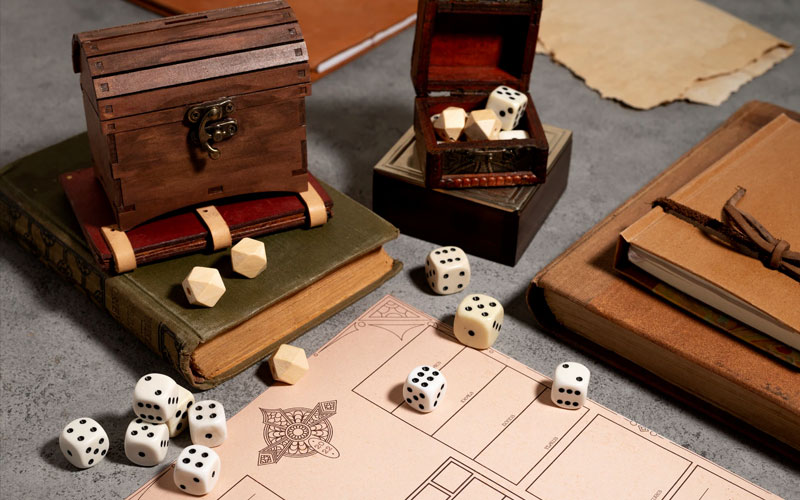
Hey there, backgammon enthusiast! Ever wonder how the pros keep track of all those moves? The secret lies in backgammon notation. This nifty system lets players record their every move, making it a breeze to track progress and learn from your plays later on. Ready to dive in? Let's roll the dice and explore the world of backgammon notation!
Think of backgammon notation as your game's personal diary. It holds all the juicy details of each move, making it a handy tool for players of all levels. From beginners to pros, everyone benefits from this notation. Ready to uncover its magic? Let's go!
Introduction
Remember Paul Magriel? He introduced a notation system that became the gold standard for backgammon enthusiasts. Imagine this notation as a universal language for all things backgammon!
Match Points
At the top of the notation, you'll find the winning target. Think "X point match," with X being the points needed to clinch victory. For instance, a "15 point match" means you need 15 points to claim the win.
Game Data
Each game in the notation carries its own story. It holds info like the current score, players' names, and their respective colors.
Point's Numbering & Moves
Picture the backgammon board as a numbered playground. Each point on the board has its number. For instance, the image below shows the numbers from the whitepiece's viewpoint. The orange pieces have the same numbers from their side.
Regular Moves
Ready for the exciting part? The moves! Each move is like a mini-adventure, described in this format: <dice>: <starting point>/<ending point> <starting point>/<ending point>. Let's break it down:
- Roll the dice (like 3-1).
- Move a checker from starting point to ending point (like 8 to 5, and 6 to 5).
Will be: 3-1: 8/5 6/5
Now you're getting the hang of it! When playing white pieces, remember they use the same numbers as orange pieces.
Doubles Moves
Doubles work similarly but with an added twist. Moves that are repeated get a special touch—brackets indicating the number of pieces moved in the same way. Example: 2-2: 13/11 11/9 24/22(2).
Hitting
Hitting is a critical move. Use * to mark a hit. For instance: 4-3: 11/7* 18/15_ means your piece at point 11 hit your opponent's piece at point 7 before moving to point 15.
Can’t move
When you can’t move, the expression “(no-play)” will be used. For example, 3-2: (no-play).
If you can make only one move the format be regular, for example, 6-2: 24/18. This means the 6 was used for moving from point 24 to point 18 and the 2 can’t be played.
Doubling Cube
When a player doubles, you'll see "Doubles to X." X is the suggested new doubling cube value. If the opponent agrees, you'll spot "Take." If not, you'll see "Pass."
Entering from the Bar
Pieces on the bar need a special shoutout. You'll see "Bar" instead of a point number. Example: 6-1: bar/24 24/18 means a piece from the bar re-entered at point 24 and then moved to point 18.
Bear-Off
"Off" is your cue to bear off a piece. For example, 3-1: 3/off 1/off means moving pieces from points 3 and 1 off the board.
Backgammon Notation Example
Check out this notation example and see how the pros play the game:
Game 2
| Bill (USA) : 0 | John (ITA) : 2 |
|---|---|
| 1) 3-1: 6/5 8/5 | 4-3: 13/10 13/9 |
| 2) 3-2: 13/11 13/10 | 5-4: 9/5 10/5 |
| 3) 5-4: 13/9 10/5 | 5-5: 13/8 8/3(3) |
| 4) 5-5: 13/8(2) 8/3(2) | 5-1: 13/8 6/5 |
| 5) 6-4: 6/2 8/2 | 2-2: 13/11 11/9 6/4(2) |
| 6) 6-6: 24/18(2) 11/5 9/3 | 6-2: 3/1 9/3 |
| 7) Doubles to 2 | Pass |
| Wins 1 point |
Conclusion
Backgammon notation may look complex, but don't let it intimidate you! With a bit of practice, you'll be reading like a pro in no time. Understanding notations can up your game and offer valuable insights into top players' strategies. So, go ahead—embrace the notation, roll those dice, and enjoy mastering the timeless game of backgammon! Good luck!